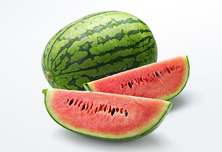L-Citrulline
L-Citrulline is a non-proteinogenic amino acid.
Foodstuffs such as watermelon and bitter gourd contain high L-citrulline. L-Citrulline is also included in the human body. It is one of the components of the urea cycle, a process involved with the detoxification of ammonia. L-Citrulline exists as a free amino acid inside the body. When L-citrulline is converted to L-arginine, it produces the vasodilator “NO (Nitric Oxide)”.

- “Reducing vascular endothelial dysfunction by suppressing lipoprotein oxidation in patients suffering from angina pectoris.” (Morita M, et al., Immun Endoc Metab Agents Med Chem. 2013;13(3).)
- “Preventing swelling in lower limbs of young females.” (Morita et al. JPT 2012;40(9):787-794.)
- “Improving vascular elasticity in middle aged males.” (Ochiai M, et al., Int J Cardiol. 2012 Mar 8;155(2):257-61.)
- “Improved exercise performance (citrulline malate).” (Perez-Guisado J. et al., J Strength Cond Res. 24(5): 1215-22, 2010)
- “Preventing pulmonary hypertension after surgery.” (Smith HA, et al., J Thorac Cardiovasc Surg. 2006;132(1):58-65.)
- “Effective at reducing tiredness (citrulline malate).” (Bendahan D, et al., Br J Sports Med. 2002;36(4):282-9.)
Note: While information regarding substances and components shown here is based on scientific data, it does not relate to the safety or effectiveness of products which use them. Statements relating to consumer products should conform to the clauses of relevant legislation such as the Health Promotion Law and The Pharmaceutical Affairs Law in each countries and areas.